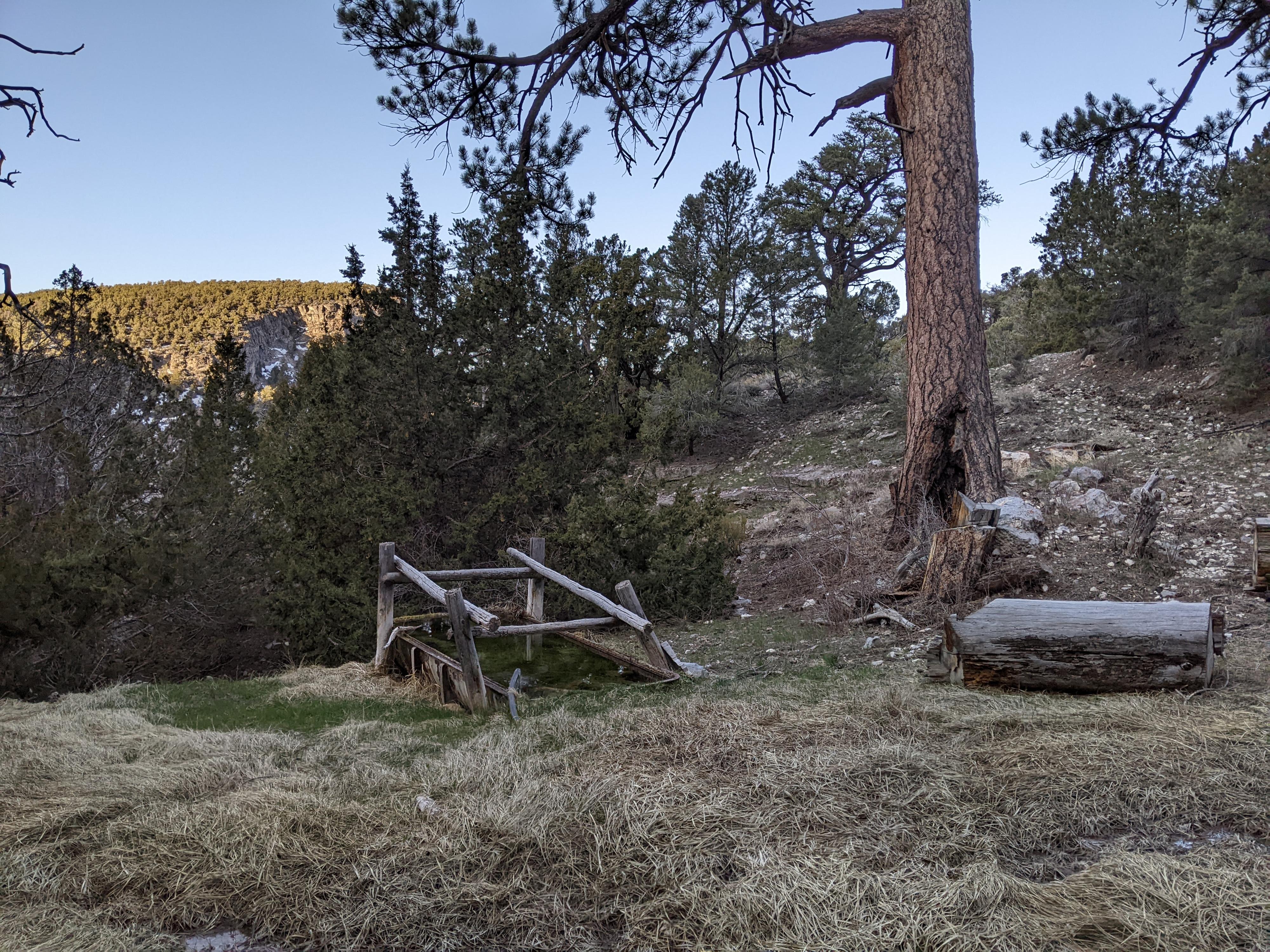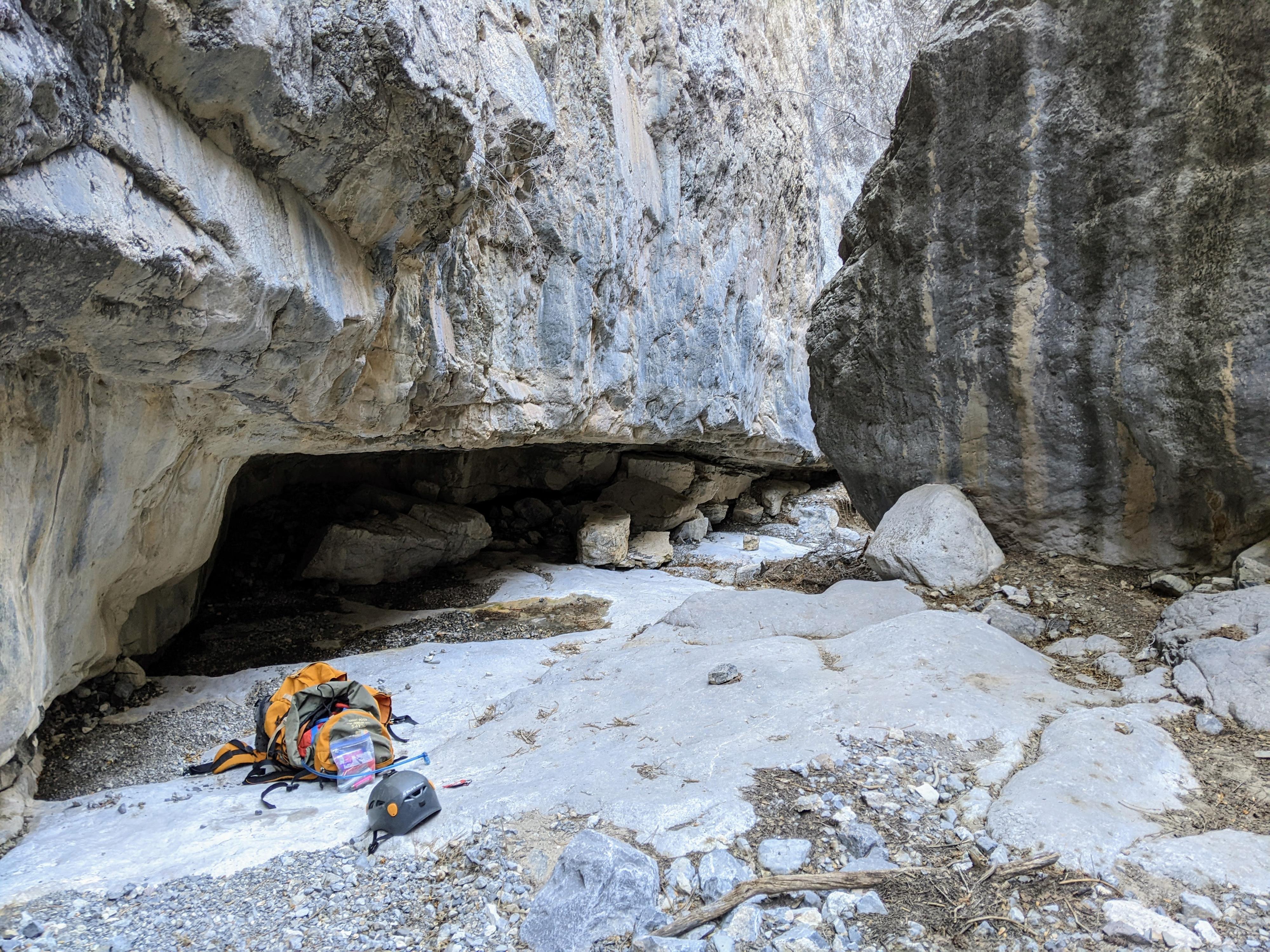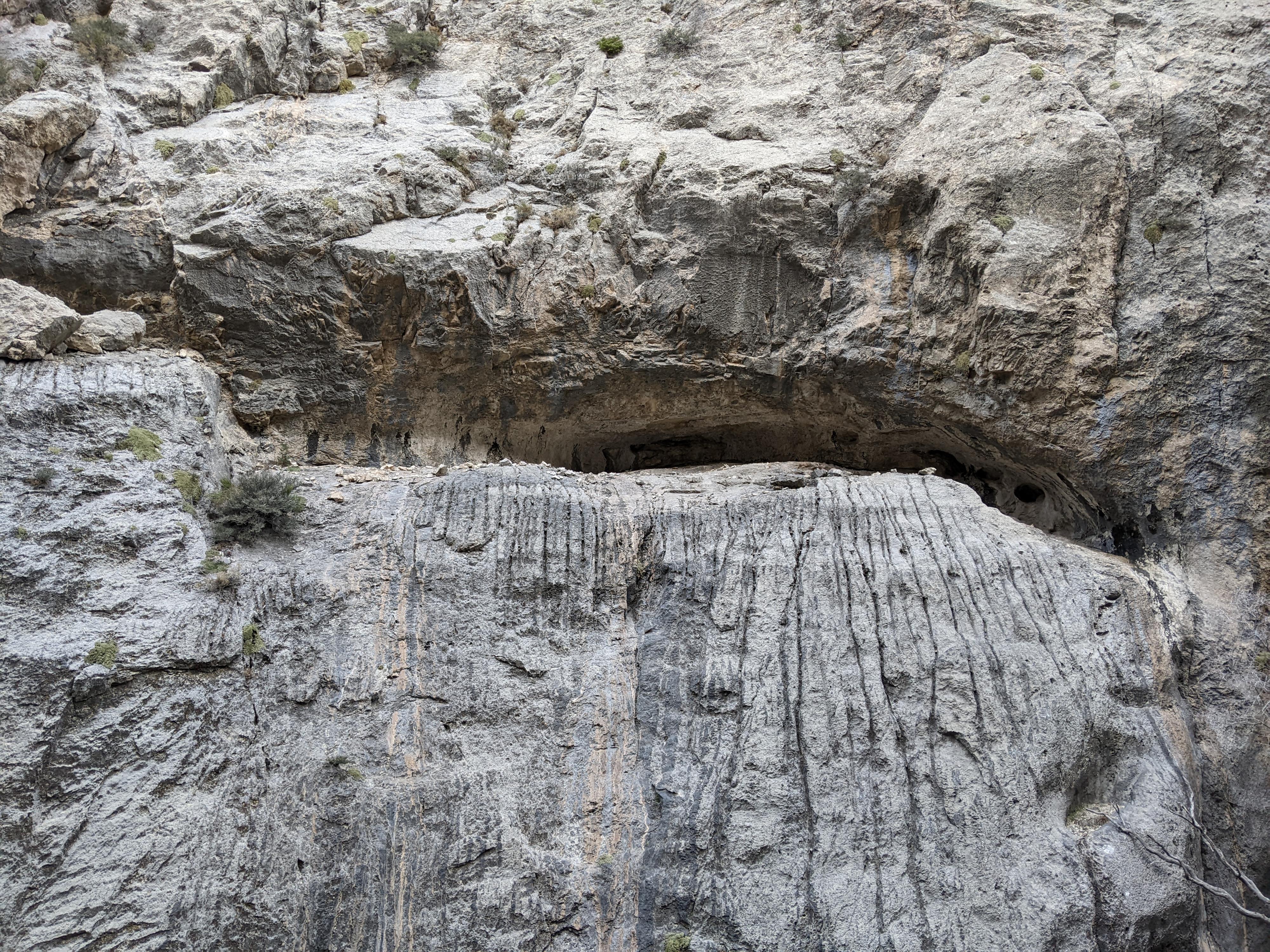 Canyoneering Sinbad Canyon
Canyoneering Sinbad Canyon
House Range
Overview
|
Wed 33 | 21 |
Thu 35 | 25 |
Fri 33 | 26 |
Sat 30 | 20 |
Sun 33 | 21 |
| View Full Weather Details | ||||
|
Wed 33 | 21 |
Thu 35 | 25 |
Fri 33 | 26 |
Sat 30 | 20 |
Sun 33 | 21 |
| View Full Weather Details | ||||
Though Southern Utah gets much more attention, the West Desert has many charms for those willing to put in the effort to see them, including technical canyons. Sinbad Canyon is one of those charming little canyons that requires work to visit. The canyon is a steep limestone canyon draining off Swasey Peak in the House Range.
The limestone narrows are brief, but pretty and very different from the sandstone canyons of Southern Utah. The area is quite similar in feel to the Virgin River Gorge, though much more remote. For those seeking solitude and adventure, this is a great outing.
Getting There
From Delta, Ut, head west on US-50 W/US-6 W toward Baker Nevada for about 12 miles to mile post 76.2 where old highway 6 is signed on the right.
- Reset your odometer as you turn north onto old highway 6. This good gravel road has many side roads. Stay on the main old highway 6 as it briefly goes north, then turns west and heads toward the House Range in the distance. ( 12S 345584E 4352404N / 39°18'26"N 112°47'28"W )
- 22.7 miles - 4 way junction. Go right here, heading north. ( 12S 311189E 4348015N / 39°15'39"N 113°11'18"W )
- 27.6 miles - Major 4-way intersection. Stay straight, continuing in a northerly direction. ( 12S 306231E 4353959N / 39°18'48"N 113°14'51"W )
- 31.5 miles - Junction to Dome Canyon. Stay straight. Left (Dome Canyon) is used for setting up the shuttle. Directions below under Exit Trailhead. ( 12S 303385E 4358495N / 39°21'13"N 113°16'55"W )
- 35.2 miles - Side roads on the left. There is good primitive camping down thes side road on the left a short distance. For Sinbad Spring/Canyon, stay straight. ( 12S 300127E 4360627N / 39°22'19"N 113°19'13"W )
- 35.9 miles - Sinbad Spring is on the left (south) side of the road. This is the trailhead, though there is not a great place to park. Find the widest spot on the road you can for a parking spot. Note: Continuing to 36.6 miles ends at a fantastic overlook of the Tule Valley and several excellent primitive camping sites. ( 12S 300090E 4361610N / 39°22'51"N 113°19'16"W )
- Exit Trailhead
- Drive down Dome Canyon for 6.9 miles to a rough two track on the right just after the canyon opens. The two track heads north. This is the recommended exit trailhead, though you can drive the two track about 1 mile and leave the vehicle where a lesser used two track leaves on the right. (labeled Exit Road on the map) All-in-all, this section seems easier to just walk! ( 12S 294570E 4358135N / 39°20'54"N 113°23'02"W )
Route
Approach (5 minutes)
From the road, head downhill toward the drainage. The spring, with a livestock trough, is on the right a couple of minutes below the road. Stay in the grassy canyon bottom. A minute past the spring is a short drop that is avoidable on the left, just before rappel 1.
Canyon
R1 about 21 m ( 69 ft. ) from the edge. You may need 30 m ( 99 ft. ) if using an anchor back from the edge. This is the biggest rappel of the day, and likely down a small dripping waterfall.
Below rappel 1, the canyon is open. Head down the stream bed, deviating as required to avoid the trees/brush. It is only about 20 minutes to where the canyon narrows again and deepens. There is a small down climb or two just before R2.
R2 is about 18 m ( 60 ft. ) if using the tree back from the edge that makes an easy fiddlestick anchor. This is the start of the deepest section of the canyon. The rappels all come in quick succession from here.
R3 about 15 m ( 50 ft. ) depending on what you use as an anchor. I rappelled down the left side (looking down canyon). Be mindful of the rope pull on this one.
R4 short drop that many groups may want to down climb.
R5 another short rappel, about 4 m ( 14 ft. ).
R6 About 10 m ( 33 ft. ). This rappel can be avoided on the right looking down canyon via a brushy thrash along the canyon wall. Rappelling is easier.
R7 lots of options, in about the 4 m ( 14 ft. ) to 8 m ( 27 ft. ) range. Boulders on the left are shorter, but straight down the middle of the canyon offers an easier rappel.
Exit (about 5 miles / 2 hours)
All too soon, the narrows are over. The canyon is opening here, a short bit of brush and route finding around boulders below leads to the more open desert and easier walking. Continue down the canyon bottom. It gets easier as it opens and becomes less boulder strewn.
About 1.5 miles below the last rappel, a couple of side canyons come in on the left. Ignore these, and stay in the main canyon, continuing downhill. About 2.5 miles (60-ish minutes below the final rappel), you will come across an old road that is also heading down canyon. Stay on this old road as it heads left (west) when the canyon opens up into the wide open desert. After about 4 miles, the old road meets up with a more used road. Go left (south) down this more well-defined road for just under a mile to where it joins to Dome Canyon road.
| Sinbad Spring Trailhead |
12S 300090E 4361609N 39°22'51"N 113°19'16"W |
| Sinbad Spring |
12S 300080E 4361561N 39°22'49"N 113°19'16"W |
| R1 |
12S 300049E 4361503N 39°22'48"N 113°19'17"W |
| R2 |
12S 299535E 4361254N 39°22'39"N 113°19'38"W |
| Last Rappel |
12S 299383E 4361122N 39°22'35"N 113°19'45"W |
| Exit Road |
12S 294820E 4359506N 39°21'38"N 113°22'53"W |
| Dome Canyon Road |
12S 294566E 4358135N 39°20'54"N 113°23'03"W |



